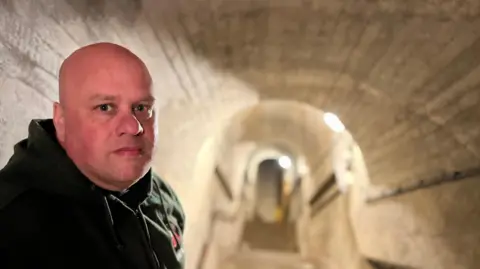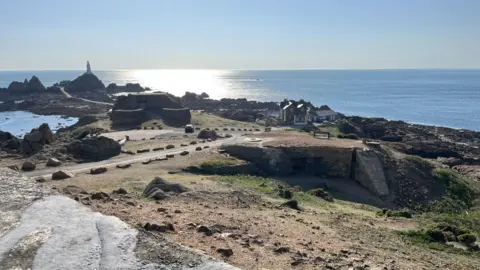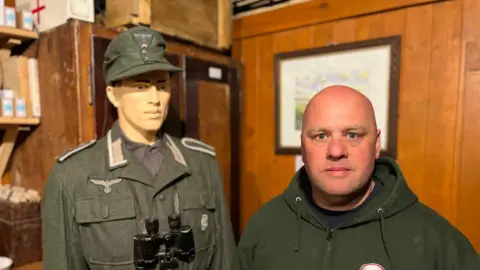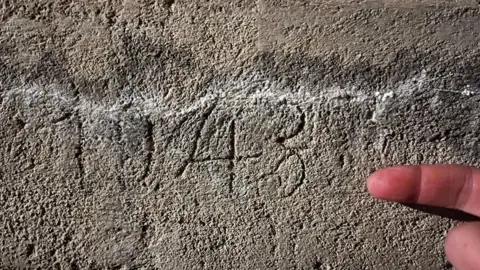Charity restores WW2 bunkers to wartime state
 BBC
BBCA charity has worked to preserve Jersey's unique wartime heritage.
When the Germans left Jersey following their surrender in 1945, they left behind countless bunkers and other fortifications which for decades lay unused.
In the 1960s and 1970s, members of the Channel Islands Occupation Society (CIOS) decided to reopen these fortifications again.
Malcolm Amy, from CIOS, has worked to restore the bunkers on the headland at Corbiere and the tunnel that joins them.

The CIOS said it is a "voluntary charity dedicated to protecting and preserving all aspects of the island's unique Second World War heritage."
The team members spend hours cleaning, restoring and researching the bunkers.

"I've been obsessed with the occupation since I was a child," Mr Amy said.
After scrubbing away the rust, mouldy concrete and other detritus that filled the rooms in the bunker, they lined them with wood panelling, repainted and filled them with the military equipment and sleeping arrangements that had been there during World War Two.
They were able to be very accurate because of a chance encounter in 2006 when the former commander of the bunker visited.
Engelbert Hoppe described how the bunker looked, and a little about the men who served there.
The crew room is where they slept and ate, and has been furnished with wooden wardrobes, mesh bunk beds and blankets, and mannequins representing the soldiers garrisoned in the bunker.

The main bunker is linked by a tunnel to another one further up the hill.
Mr Amy said after they dried the damp concrete they found scratches and pencil marks made by the engineers who oversaw the original work.
He said the reason he was driven to it was because he wanted to show people today "how the other side lived", and that the Germans were individuals and human too.
Mr Amy said he believed it was essential today's generation learned about what happened in the island during the occupation, from every perspective.
"For me, it's just to ensure that part of the island's heritage is viewed now and is passed on to future generations, which is why most of the team do it," he said.
"It's important to educate people about what happened here and present it in a truthful way."
Follow BBC Jersey on X and Facebook. Send your story ideas to [email protected].
